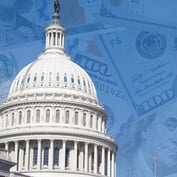What You Need to Know
- The deal would clawback funding for IRS agents and speed up some energy project environmental reviews, according to a GOP summary.
- The pact will likely help reduce recent tensions in financial markets where investors had been demanding higher yields on securities set to be repaid shortly.
- The deal — reached after weeks of bitter discussions — includes a two-year appropriations agreement that keeps non-defense spending roughly flat with current levels.
White House and Republican negotiators reached a tentative deal late Saturday to raise the U.S. debt ceiling and avert a default that threatened to send tremors through the global economy.
President Joe Biden and House Speaker Kevin McCarthy, who sealed the agreement during a 90-minute phone call, must now shepherd the framework to final legislative passage over the objections of hardliners in both parties.
McCarthy said he will talk with Biden again on Sunday and line the bill up for a vote on Wednesday.
“We still have a lot of work to do, but I believe this is an agreement in principle that is worthy of the American people,” McCarthy told reporters at the Capitol.
There’s little margin for error, with Treasury Secretary Janet Yellen warning that an extension must be finalized by June 5 to avoid a historic default that would send borrowing costs soaring.
The deal — reached after weeks of bitter discussions — includes a two-year appropriations agreement that keeps non-defense spending roughly flat with current levels, a person familiar with the deal said, speaking on condition of anonymity.
It also suspends the debt limit through January 2025 — after the next presidential election. Some people familiar with the framework said that it would kick back in on Jan. 1, while another said the precise date may depend on the text of the bill, which was still being hashed out.
Either way, it sets up a scenario in 2025 similar to this year, when the Treasury Department began employing extraordinary measures in January to avert a default.
Economists have said even a short default could prompt the loss of hundreds of thousands of jobs. On May 24, Fitch Ratings placed the US’s AAA credit rating on watch in a move that reflected mounting concerns the US would go over the brink.
The pact will likely help reduce recent tensions in financial markets where investors had been demanding higher yields on securities set to be repaid shortly.
Rates on instruments due in early June topped 7% at one stage. Credit-default swaps, derivatives that allow investors to insure against non-payment, also showed elevated concern, with prices peaking well above levels seen in a pervious debt limit debate in 2011.
Still, the attention of investors may swing to other risks. The Treasury will now likely seek to replenish its emaciated cash balance — which on Thursday fell below $39 billion to its lowest level since 2017.
The resulting deluge of bill sales is likely to suck a significant amount of liquidity out of markets, adding pressure at a time when the Federal Reserve has been raising interest rates and shrinking its balance sheet.
More Details
While the agreement doesn’t create work requirements for Medicaid recipients, it places time limits on the food assistance program known as SNAP up to age 54, a measure that House Republicans pushed for. Those would be phased out by 2030, however.








 May 28, 2023 at 07:29 AM
May 28, 2023 at 07:29 AM












 Copyright © 2024 ALM Global, LLC. All Rights Reserved.
Copyright © 2024 ALM Global, LLC. All Rights Reserved.